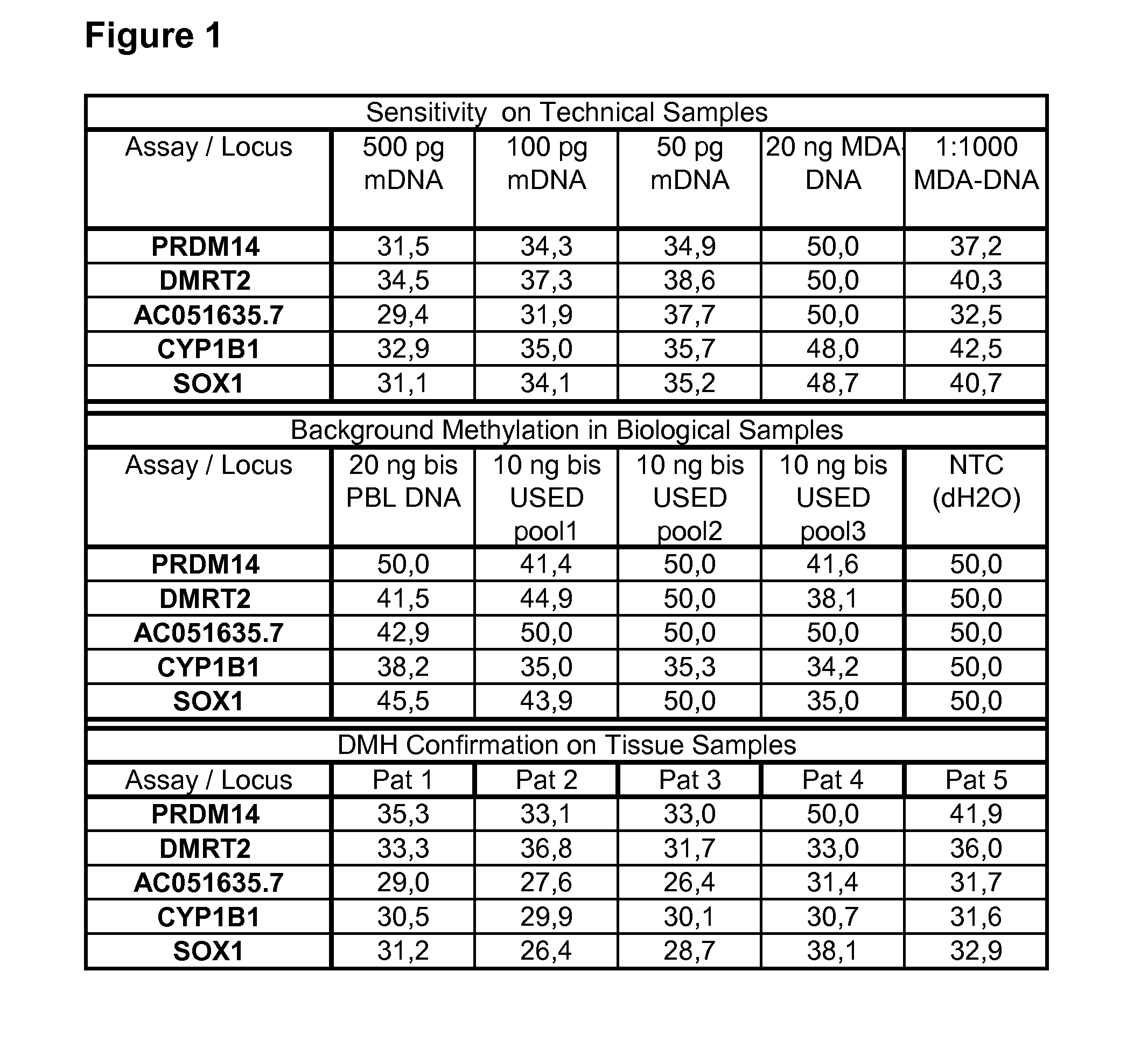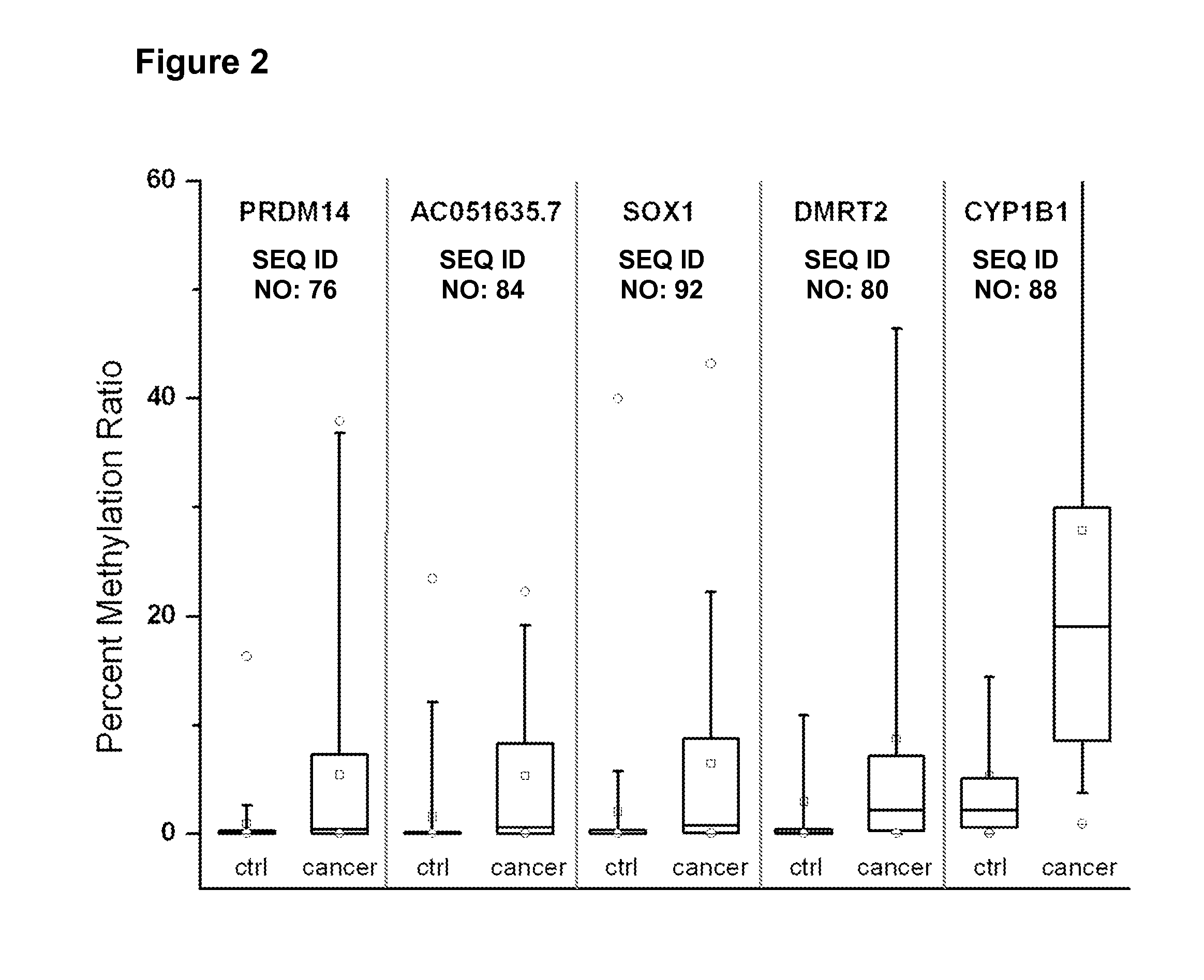Methods and Nucleic Acids for Analysis of Bladder Cell Proliferative Disorders
a bladder cell and proliferative disorder technology, applied in chemical libraries, combinational chemistry, sugar derivatives, etc., can solve the problems of poor sensitivity and specificity, many diagnostic tests have been criticized, and test having poor sensitivity produces a high rate of false negatives, so as to achieve high sensitivity, specificity and/or predictive value
- Summary
- Abstract
- Description
- Claims
- Application Information
AI Technical Summary
Benefits of technology
Problems solved by technology
Method used
Image
Examples
examples
[0209]1. Introduction
[0210]A reliable and non-invasive diagnosis of recurrent bladder carcinoma remains a challenge for the clinical practice. We employed differential methylation hybridisation (DMH) as methodology to discover DNA methylation-based biomarkers which are suitable for the early diagnosis of non-muscle invasive bladder carcinoma. Tumour tissue and DNA from urine sediments of healthy people was chosen as sample material for the discovery. Genomic loci identified as differentially methylated were filtered to select those candidates which are hypermethylated in tumour and predominantly unmethylated in the DNA derived from urine sediment of healthy people as well as in normal peripheral blood lymphocytes.
[0211]For a subgroup of these marker candidates we developed methylation specific PCR (MSP) assays to validate the findings from this discovery study. The best performing assays were finally tested on a collection of urine samples from patients with non-muscle invasive blad...
PUM
| Property | Measurement | Unit |
|---|---|---|
| Mass | aaaaa | aaaaa |
| Electrical inductance | aaaaa | aaaaa |
| Level | aaaaa | aaaaa |
Abstract
Description
Claims
Application Information
 Login to View More
Login to View More - R&D
- Intellectual Property
- Life Sciences
- Materials
- Tech Scout
- Unparalleled Data Quality
- Higher Quality Content
- 60% Fewer Hallucinations
Browse by: Latest US Patents, China's latest patents, Technical Efficacy Thesaurus, Application Domain, Technology Topic, Popular Technical Reports.
© 2025 PatSnap. All rights reserved.Legal|Privacy policy|Modern Slavery Act Transparency Statement|Sitemap|About US| Contact US: help@patsnap.com


